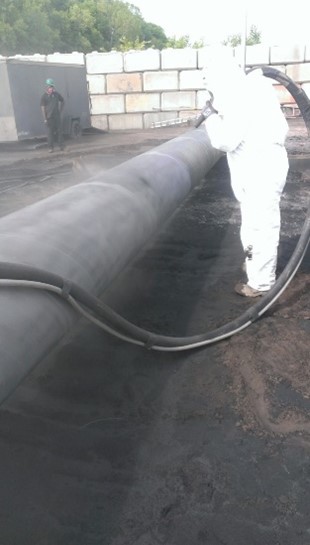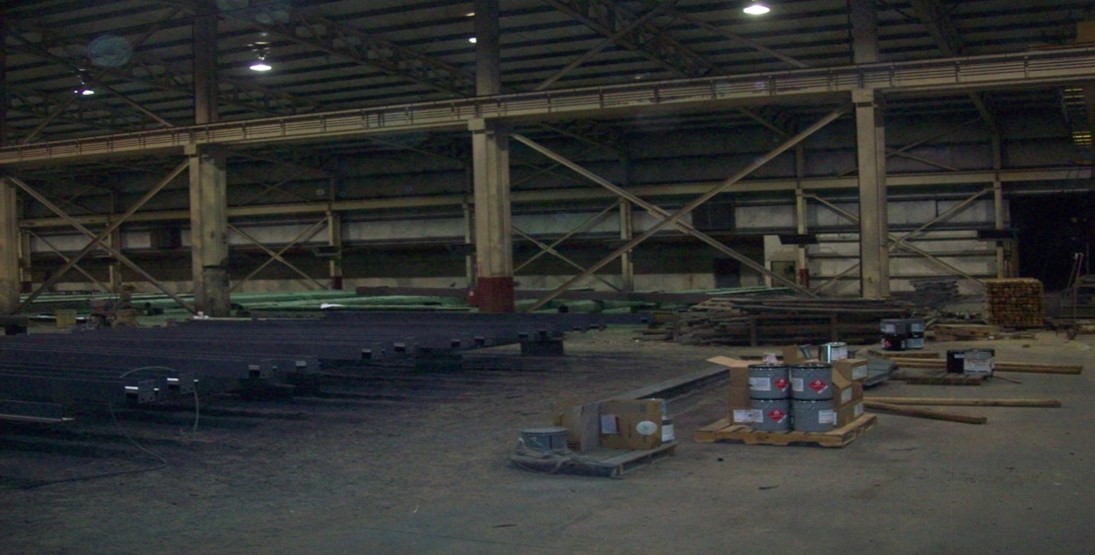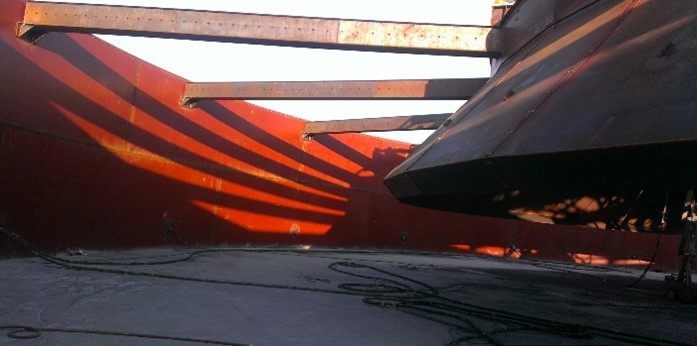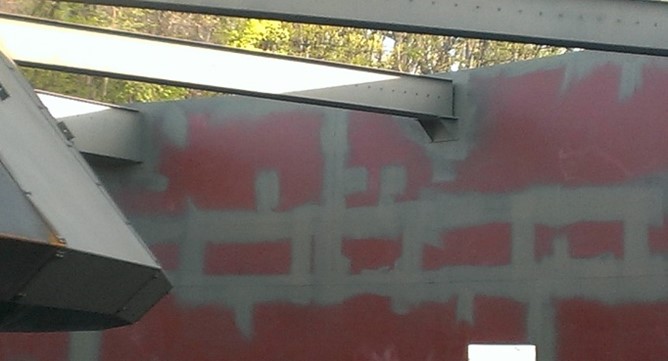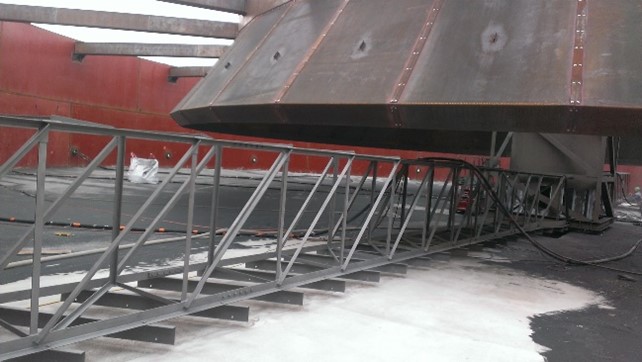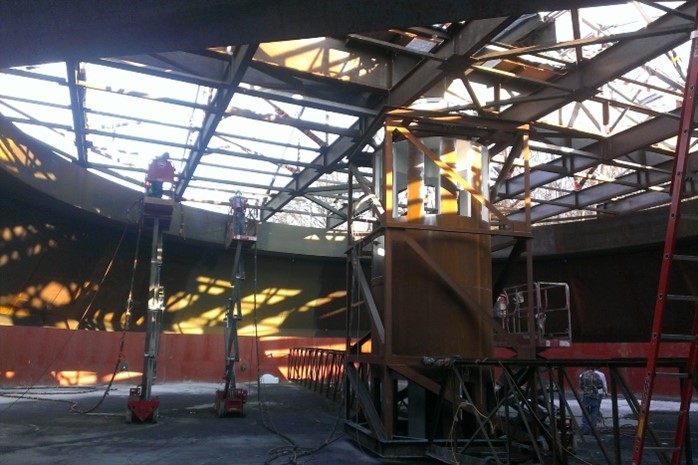The previous 4 pics were of the same new clarifier located in the Midwest. Some of the components were Blasted and Painted in the shop – some were left to Blast and Paint in the field.
Specifically, pics 3 & 4 show Shop blast & painted sidewalls (red) – and subsequent field touchup consisting of blasting and painting the field weld seams (green touchup).
Interesting note – the red shop primer had a 30 day recoat window maximum – so in order to perform the touchup and later intermediate and topcoat, all coated areas had to be brushed blasted to ensure adequate adhesion needed in immersion service.
It is the bloggers opinion that not much was saved on Shop blasting and painting the sidewalls as the accessibility after erection was not much different than the Shop environment. General Contractor / owner / painter would have been better off with Field blasting and painting on these sidewalls.
On the other hand, Pics 5 & 6 show structures that were left to be Field blasted and painted – and what a challenge it became. Pic 5 shows the Clarifier Sweep Arms. When in operation, the Sweep Arm function is to slowly rotate at the bottom of the clarifier and thereby force the sludge to the center of the tank for removal.
Once installed, the distance from the bottom of the very complex sweep arm structure to the concrete floor of the clarifier is about 6 to 8” maximum. Imagine the difficulty in bending a blast nozzle to adequately clean all the angle irons to meet SSPC SP-10 Near White Metal Blast. The Inspector had the contractor re-blast the bottom several times before passing the surface prep.
Next the contractor had to apply the 3-coat system to that inaccessible area as well. The Inspector had the contractor reapply the primer 3 times before it would pass Pinhole Detection – and specified film build.
It would have been MUCH easier, faster and more economical to blast and paint the fabricated sweep arms in the fab shop – where they could be rolled over and moved as needed.
Same scenario with pic 6 showing the roof superstructure of the clarifier. Following the installation, the contractor access was only attainable with the scissor lifts as seen in the pic. So, the contractor had to:
- Ride the lift up for abrasive blasting, lower and move to the next setting and continue blasting.
- Just after lunch, the areas blasted had to be blown down to remove residual abrasive dust etc. So, one more trip up and maneuvering around.
- On the same day, all areas cleaned had to be primed so as not to “lose the blast” (premature rust bloom).
- After completing the prime coat operation, contractor had to spray apply the Intermediate coat per specification using the same scissor lift operation.
- Finally the contractor sprayed the specified Topcoat to the prepped, primed and intermediate coated areas.
Once again, in the bloggers opinion, the superstructure should have been Shop blasted and painted – and touchup following the install.
Careful consideration of the specific project and the steel structure – along with the specified coating system – will help in determination which way to approach the Blasting and Painting.
Whether applied in the Shop – or in the Field – consideration must be given to:
- Accessibility in the Field vs Shop.
- Recoat Windows of the coating system selected.
- Painting in the various seasons in the Field.
- How much time delay can be tolerated from inclement weather in the Field.
- Inspector accessibility.
- The amount of Field touchup needed to complete a project Shop blasted and painted.
Once all the major factors have been considered, only then can the owner / General Contractor / Fabricator and Painter decide on whether to Blast and Paint in the Shop (and Touchup after install) – or accomplish all the Blasting and Painting in the Field.
If you would like to discuss a specific project regarding Shop vs Field, please contact us at TCR Coatings.

